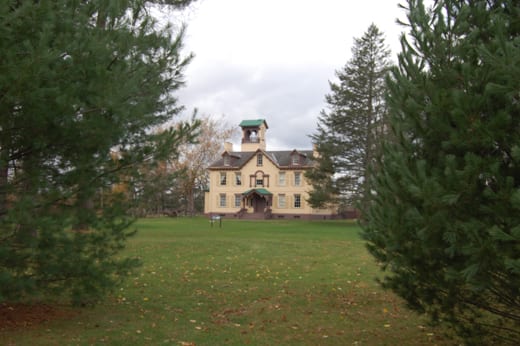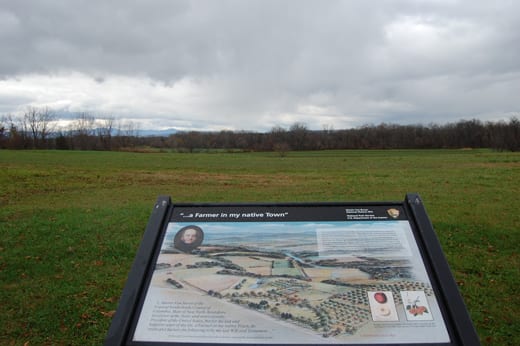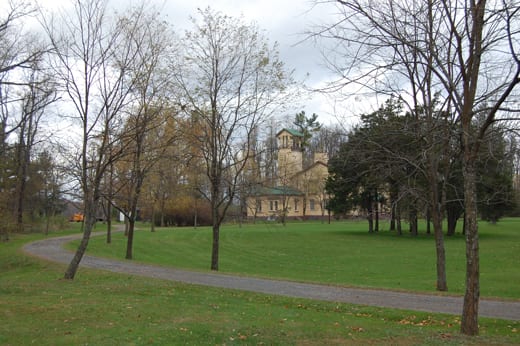HISTORIC SITES IN THE UNITED STATES: PAST AND PRESENT
Historic parks and monuments have suffered an overall decline in visitation over the last 30 years. This may not be true of all destinations, particularly those most popular with tourists. But according to the American Academy of Arts and Sciences, 25% of Americans reported visiting a historic site in 2008, down from about 38% in 1982. It has become a commonplace to point out the declining popularity of house museums and other traditional historic sites, and to wonder what the future holds for the past, in this sense.
But during the period this apparent loss of interest has occurred, the public appetite for “heritage” seems to have risen to new heights. Congress has designated forty-nine National Heritage Areas since the 1980s, and “heritage tourism” has become a byword for economic development officers as well as historic preservationists. The past, as always, remains a subject of interest, a shaper of identity, and perhaps a reason to argue. New research and revisionism continue to fuel the urge to commemorate and interpret historical events, individuals, and places. New and “participatory” museums proliferate, and the hunger to define or revise historical identities continues unabated all over the world. If many traditional historic sites are less visited, what David Lowenthal calls the “heritage crusade” goes on with what seems to be greater passion than ever.

Why this apparent inconsistency? The break down in the relationship between many historic sites and the visiting public cannot be blamed on a lack of interest in the past. Nor has this estrangement resulted from on a lack of activities and programs, which creative site managers are constantly improvising and expanding. The interpretive themes and historical narratives conveyed at many historic sites today are more diverse and interesting than ever. Site managers have implemented new partnerships and strategies (and of course mobile device “apps”) to reach wider audiences and keep the public engaged. Yet the decline in overall visitation seems to continue.
There is another change that has taken place since the 1980s that has changed in the way people interact with historic sites. While this change is not a reason in itself for a decline in popularity, it does give additional insight into the always changing dynamic between the past and the present, as perceived by the visiting public. Since the 1980s, historic places have come to be appreciated, understood, and experienced increasingly as cultural landscapes, rather than as historic houses or structures isolated on their own. This is a shift in public perception and preference, and is often reflected in site interpretation that emphasizes setting and regional context.

Interpreting historic places as cultural landscapes does not diminish their appeal; there is every reason to believe the opposite is true. When interpretive themes extend beyond a historic house to include surrounding agricultural lands, for example, the people who worked those lands and the economic forces that shaped their society become part of the narrative. Native American and African American history can be more effectively interpreted through the landscape than is possible through a tour of “big house” of a plantation or estate. Environmental history can create a holistic context for historical trends and events. While a restored historic house offers its own powerful encounter with the past, the experience of associated designed landscapes and natural features increasingly is understood as necessary to convey the fullest possible significance of a historic site.
But while a historic house can be entered—often leaving behind the present environment to a significant degree—visiting any landscape includes the experience of the ongoing life, habitation, patterns of movement, and the rest of the natural processes and cultural activities that constitute it. We may define boundaries and periods of significance of a cultural landscape, but the experience of it as the “past” nevertheless involves an encounter with the “present.” A historic landscape exists in a state of constant negotiation with the present environment, of which it is a significant part. Visiting historic landscapes therefore creates a relationship between the past and present that is more ambiguous than that created by a historic house or museum tour.

This difference alone does not explain why historic sites may be less visited in recent decades. But the experience of a cultural landscape involves a more complex—and not always anticipated or well facilitated—dynamic between past and present. Such an experience does not begin by walking through a door, for example, but miles away as the visitor drives (usually) through the surrounding region. Then there is the matter of the immediate surroundings of the historic site, which are likely to feature highways and roadside businesses, and the visitor’s arrival, usually to a parking lot. Within the site itself, new paths, interpretive features, and service and maintenance buildings clearly must be part of the scene, no matter how aggressively managers attempt to banish the present. Visiting and understanding historic sites as landscapes creates its own balance between the past and the present; between “preserved” features and characteristics, and “designed” restorations and facilities.
The experience of historic sites as a cultural landscapes challenges an absolute distinction between the past and the present, and between what is historic and what is ongoing and contemporary. Such tension offers tremendous potential for constructing and conveying the significance of the historical events and individuals associated with a site. But realizing such potential also requires a fundamental reconsideration of how historic sites embody and represent the past in relation to the present. Traditional strategies of restoring a “historic scene” and attempting to maintain it unchanged may no longer suffice to adequately convey the significance of a place, or even to continue to attract the attention of the public. Landscape restorations, even when rigorously researched, often attempt to deny the present, and create a dissonance that leads to a perceived crisis of credibility and authenticity. At many historic sites, more complicated forms of engagement—between the public and the site, and between the past and the present—are needed for these places to fulfill their potential and regain their position in the public’s imagination.